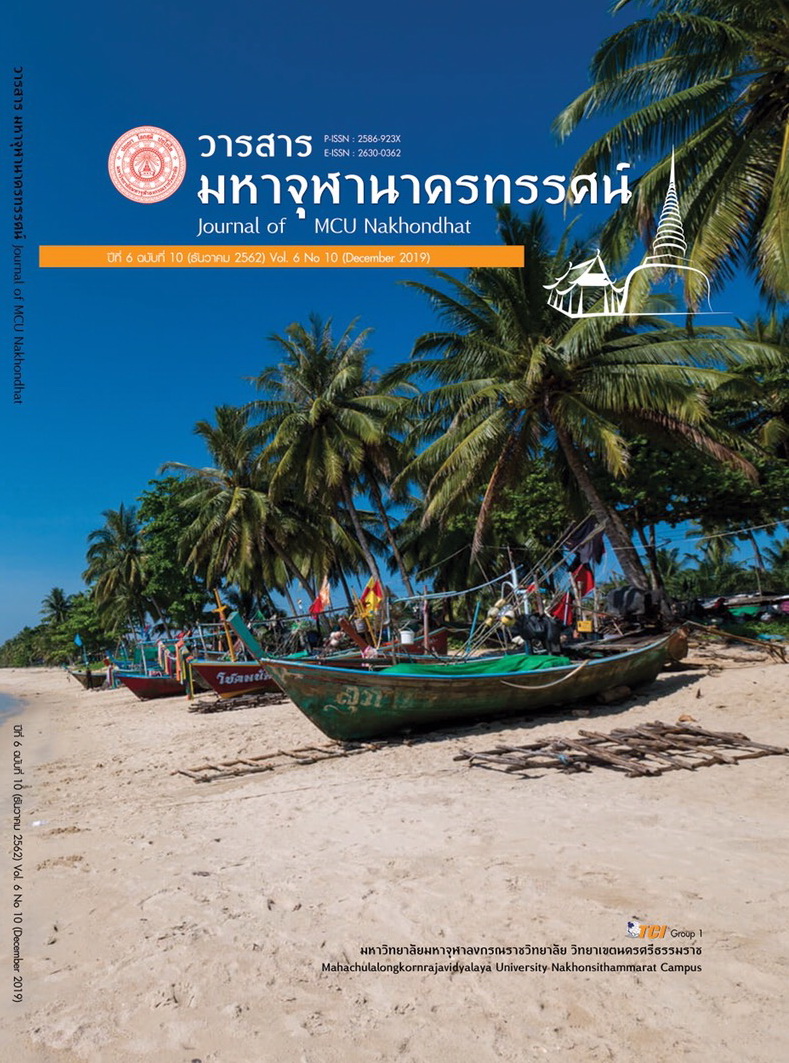A MODEL OF WATER MANAGEMENT IN THAI GOLF COURSES TO BECOMES A RESERVE WATER SOURCE FOR CONSUMPTION DURING THE DRY SEASON AND PUBLIC SUSPENSION IN THE COMMUNITY DISASTER CASE STUDY: GOLF COURSES IN EASTERN ECONOMIC CORRIDOR (EEC)
Main Article Content
Abstract
This research aims to study the guidelines for managing water reserves in golf courses to become water reservoirs for consumption during the dry season and public suspension in the community disaster. A qualitative research methodology was used to collect data with in-depth interview 27 of golf club executive’s representatives in the Easthern Economic Corridor (EEC) including 3 provinces are Chachoengsao, Chonburi and Rayong and 10 experts discussion in focus groups to confirm the findings and exchange useful opinions. The researcher uses the analysis of opinion data obtained from in-depth interview and group discussions then separates issues to conclusion for confirm the final research results.
The result indicated that:
The guidelines for managing water reserves in golf courses to become water reservoirs for consumption during the dry season and public suspension in the community disaster are as 1) Integration of collaboration that emphasizing the participation of government agencies, golf course operators and communities. 2) Control, inspection and evaluation. 3) Campaigning and raising awareness to creating discipline in the use of valuable water resources. 4) Establishing a central water reserve database. 5) Applying sufficiency economy principles for managing water in communities and golf course operators. 6) Reducing the risk of water shortage. 7) Managing water for public services to be efficient and manifest.8) Determine water management measures based on the potential of communities and golf course operators. 9) Increasing water reserves in communities and golf courses. 10) Improvement and development of public water resources. 11) Managing water according to capacity. 12) Reduce the negative impact on natural water sources. 13) Require water treatment before releasing into nature. 14) Determine policy or formulation of water management plans. 15) Establish a committee for managing of water. 16) The most efficient use of water 17) Using the Kaem Ling project to solve flood problems. 18) Creat rainwater flow routes plan. 19) Fair access to water resources. 20) Use modern technology to increase water management efficiency. 21) Study and research for the cause of water shortage. 22) Planting the plant that less water used on the golf course. 23) Creating models and methods of water management development that suitable with area and 24) There are clearly separating reservoirs for public service purposes in emergencies from field maintenance and consumption.
Article Details
References
Chiraporn Hayeepi. (2010). The role of sub-district municipality in water resource Management, Thale Noi area. Bangkok: National Institute of Development Administration.
Department of Environmental Quality. (2009). Industry and local environment. Retrieved October 12, 2018, from https://www.local.environment.in.th /formal_data2.php?id=1575
Department of Water Resources. (2015). Concept of water resource management strategic plan. Bangkok: Department of Water Resources.
Kraisorn Pengsakul. (2015). Public participation in water resources management. A case study of river basin, Khlong Palian Branch, Trang Province. Bangkok: Department of Water Resources.
Mitchell, B. (1997). Reflections on Water: Canadian Water Resources Association. Ontario: CWRA.
National Disaster Prevention and Mitigation Committee. (2015). National Disaster Prevention and Mitigation Plan 2015. Bangkok: Department of Disaster Prevention and Mitigation Ministry of the Interior.
National Water Resources Board. (2015). Strategic Plan for Water Resources Management. Retrieved May 5, 2019, from https://oopm.rid.go.th/water management/ExecutiveSummary.pdf
National Water Resources Management Office. (2017). (Draft) 20 Year Water Resources Management Master Plan (2018 - 2037). Retrieved February 2, 2019, from https://www.onwr.go.th/wp- content/uploads/2019/06/รวมเล่ม-แผนแม่บท-20-ปี-v41.pdf
Office of the National Economic and Social Development Board. (2016). The 12th National Economic and Social Development Plan (2016-2021). Bangkok: Office of the Prime Minister.
Ostrom, E. (1990). Governing the Commons: The Evolution of Institutions for Collective Action. Cambridge, UK: Cambridge University Press.
Paiboon Watthanasiritham. (2011). Talk about normal life. Bangkok: Bangkok Business Press.
Secretariat of the House of Representatives. (2007). The Constitution of the Kingdom of Thailand 2007. Bangkok: Religious Printing House.
USGS. (2016). Minerals Yearbook. Retrieved January 10, 2019, from https://minerals.usgs.gov/minerals/pubs/myb.html
World Bank. (2016). The World Bank Annual Report 2016. Retrieved Frebuary 19, 2019, from https://openknowledge.worldbank.org/handle/10986/2 4985


